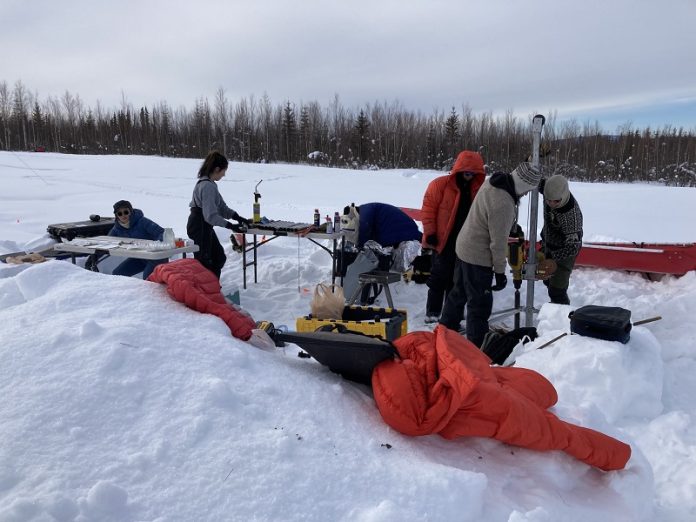
When Katey Walter Anthony, a researcher at the University of Alaska Fairbanks, first heard rumors about methane gas bubbling under the lawns of Fairbanks residents, she didn’t think much of it.
As a scientist who studies lakes, she assumed methane was only an issue in wetlands.
But when a local reporter asked her to investigate strange bubbles on a nearby golf course, her curiosity was piqued.
To her surprise, when she and the reporter set the bubbles on fire, they confirmed the presence of methane gas.
Curious to see if this was an isolated incident, Walter Anthony began exploring nearby areas. What she found shocked her—methane wasn’t just coming from the golf course but also from the surrounding forests. Streams of methane gas were escaping from the ground in large amounts, even under trees.
Realizing the significance of this discovery, Walter Anthony and her team, with funding from the National Science Foundation, launched a detailed study of dryland areas in Interior and Arctic Alaska.
They wanted to find out if this was a widespread issue or just a local oddity.
The results, published in Nature Communications, revealed that these upland areas were releasing some of the highest levels of methane ever recorded in northern ecosystems.
Methane is a powerful greenhouse gas, 25 to 34 times stronger than carbon dioxide, so this discovery raises new concerns about how thawing permafrost could speed up climate change.
Current climate models don’t account for these dryland emissions, often predicting that these areas would be insignificant sources of methane or even help absorb it as the Arctic warms.
But the study shows that these dry, well-drained sites are actually releasing more methane than many wetlands, especially during winter when emissions were up to five times higher in some places.
To understand where this methane was coming from, Walter Anthony and her team examined 25 additional sites across Alaska, measuring methane levels at over 1,200 locations over three years.
They found that most of these sites were emitting methane, particularly from areas with signs of permafrost thaw, known as thermokarst mounds.
These mounds create unique formations called taliks, where pockets of soil remain unfrozen year-round, allowing microbes to stay active and produce methane even in winter.
The team also discovered that areas with ancient Yedoma deposits—carbon-rich soils from the Pleistocene era—were particularly high in methane emissions.
These deposits only cover 3% of the permafrost region but hold over 25% of the carbon stored in northern permafrost. As Arctic warming continues, these taliks are expected to spread, making methane emissions a bigger problem than previously thought.
Walter Anthony’s findings suggest that the impact of thawing permafrost on climate change could be much greater than anyone anticipated, especially in areas with Yedoma deposits. This discovery adds a new layer of urgency to understanding and addressing the effects of global warming.



